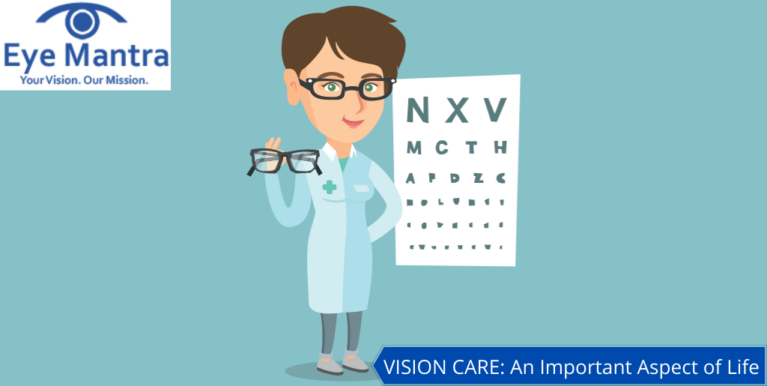Contents
Vision Care
Going to the doctor, going to the dentist – these are all part of taking care of your health. But do you go to an eye doctor? Keeping your eye health or vision care is important! Eye tests at all ages and stages of life can help keep your vision sharp.
Improving your vision is easy if you take a regular eye examination. As early detection of an eye problem can be prevented and taken care of. About 11 million people over the age of 12 need vision correction, and that is why you should be careful and take regular eye examinations. Regular eye examinations and vision care are also an important part of early eye diagnosis and treatment of any disease.
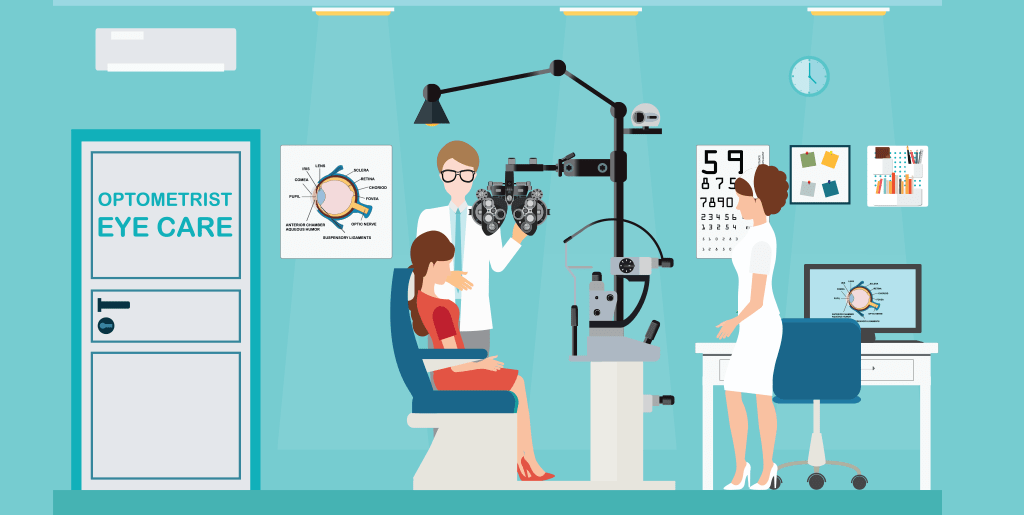
How To Keep Your Normal Vision Intact?
Eye infections are common and can be ignored for a long time as some have no symptoms at first. An eye that seems completely fine from outside may be developing some diseases which often leave the symptoms of blurred vision. The eye is cleansed by an eye doctor during the test to detect eye diseases early on so that the treatment to prevent vision loss can be effective.
During the test, sharpness, eye alignment, and eye movements are tested with deep comprehension. Eye drops are used to enlarge your pupil so that your eye doctor can see in your eyes and diagnose the symptoms of any eye problems. Your eye specialist may also recognize other conditions such as blood pressure or diabetes, sometimes before your primary care physician.
Common Eye Diseases
Early treatment is very important to prevent some common eye diseases before they create any chronic disease or blindness:
- Cataract (lens blurring), the leading cause of vision loss.
- Diabetes retinopathy (causes damage to the blood vessels behind the eye), another leading cause of blindness.
- Age-related macular degeneration (gradual deterioration of light-sensitive tissues in the eye).
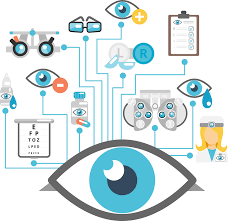
The estimated 61 million people are at high risk of vision loss, only half visited an eye doctor in the last 12 months. Regular eye care can contribute to lifestyle changes in maintaining the vision of millions of people.
Symptoms of An Eye Problem
If you have the following eye problem, do not wait for your next appointment, visit an eye doctor immediately:
- Decreased vision
- Discharge or redness of the eye
- Eye pain
- Double vision
- Fluid’s secretion (small specks that appear to be floating in front of your eyes)
- Circles (halos) around the lights
- Light bulb
Why An Eye Examination Is Important?
Although people tend to have more vision problems as they grow older, children need eye tests or vision care to ensure a healthy vision, too. However, less than 15% of pre-schooler have an eye test and less than 22% get a vision test. Visual testing may reveal near-sightedness and farsightedness, but it cannot diagnose other eye diseases and their causes. A thorough eye examination is needed to diagnose eye diseases.
An eye disease, Amblyopia (reduced vision because the eye and brain do not function properly) is the most common cause of vision loss in 2-3 children among 100 children. Amblyopia needs immediate treatment to help prevent vision loss.
How Often You Should Give An Eye Test?
Children’s eyes should be checked regularly by an optometrist or ophthalmologist. People with diabetes should have their eyes checked every year. Adults who usually do not face any problem should still get their eyes checked once every 3 years.
Some people are at high risk for glaucoma and should have an eye examination every two years:
- People over the age of 60.
- People with a family history of glaucoma.
Some Common Eye Tests
You use your vision for almost everything you do, from reading to driving, working, and surfing the Internet. And because your vision plays such an important role in your daily life, you need to protect the health of your eye. You can achieve that goal by making regular eye appointments at your optometrist’s office.
you can expect several basic tests. Learn about the most common eye tests so you know what to expect at your next eye visit. It is very important to get your eyes checked regularly as sometimes the symptoms are not noticeable and cause severe internal damage to our eyes. Make sure you choose the correct doctor for your problem and do not change the doctor in between the course of the treatment. It is important to trust your doctor and follow the guidelines mentioned by them to treat any disease faster.
Vision Acuity Test
This test is probably what you perform when you go to an eye doctor. With one eye at a time, you will read letters from a board placed far away from you. Your ophthalmologist checks the result of both eyes to detect how the level of vision for each eye differs in comparison to the standard 20/20 vision.
Retinoscopy
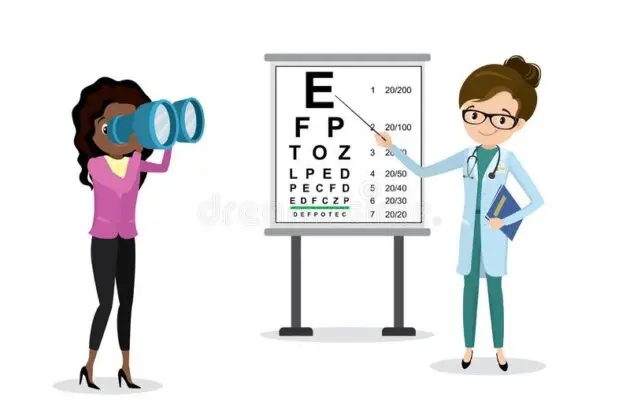
Retinoscopy allows the ophthalmologist to evaluate your appropriate lens condition. As you look at the phoropter, the machine that eye doctors use to perform retinoscopy. The eye doctor examines the different lenses in front of your eyes. You focus on the main thing in front of you (usually the “E” in the top row of the chart). An eye specialist illuminates the light in your eyes and watches how light affects your eyes with different lenses.
Refraction Test
Along with retinoscopy, a re-examination will determine your eyeglass treatment. You also look at the phoropter and look at the eye chart on the opposite wall during this vision test.
In each test, you see a series of two lenses. An eye specialist repeatedly asks which of the two lens options allows you to see clearly. Based on your answers, the eye doctor determines whether your eyes are distant or affected by astigmatism. These tests may also indicate that you do not need eyeglasses.
Keratometry Test
This test measures the exterior structure of the eye, known as the cornea. The condition of the cornea affects the way your light perceives and reflects it back. Some people have corneas with long and short curves, leading to a condition known as astigmatism. Ophthalmologists use keratometry tests to diagnose astigmatism.
During a keratometry test, you look at a special machine. Your eye specialist adjusts the machine to fit your eye. Then the eye doctor reads machine measurements, which show the shape of your cornea.
Examination of Visual Field
While people tend to focus on whatever our eyes focus on, we can also see things on the sides of our field of vision. This viewing area is known as our outdoor view. Examination of the visual field examines our external perception.

Many types of field view tests are available that includes the following:
- Default parameters: You look at a special machine and focus on the area in the center. You press a button whenever you see a bright light in your outdoor view.
- Green screen test: Focuses on the target in the middle of the screen. Your ophthalmologist moves objects in and out of your external vision and indicates when you can see them for the first time and when they end up in your field of vision.
- A field view of the face view: Your optometrist sits in front of you and moves his hand in and out of your circular vision. He says when you see a hand and how many fingers you look up.
Each test allows an eye doctor to see gaps in your external vision and determine your visual field vision.
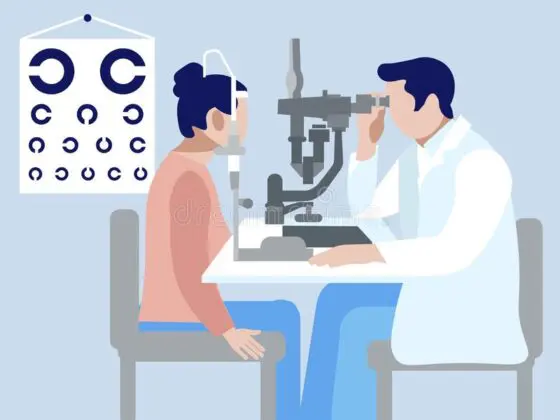
Range of Unusual Pressure
An intraocular pressure test measures the strength or pressure exerted by the fluid in your eyes. Abnormal eye pressure can be a warning sign of glaucoma.
A glaucoma screening machine sends instant air to open your eye. Air surprises, your eyes briefly, so your eye responds by closing instantly. The machine then measures your eye pressure based on your response and your eye’s resistance to pressure.
Your eye doctor can measure intraocular manual pressure and get a more accurate reading. This test uses special instruments that gently touch your eye to measure internal pressure. Prior to the test, the optometrist will use antiseptic drops to make sure you do not feel the iron during the test.
These definitions of regular eye examinations should make it clear that eye tests are simple and painless. Make regular visits to your local ophthalmologist to keep your eye health or for vision care. If your eye specialist performs additional tests on your appointment, ask him or her to explain it.
Visit our hospital in Delhi or our website www.eyemantra.in to find the treatment for your underlying problem.
Call +91- 9711115191 or mail us at [email protected] to book your appointment. We have a team of great and experienced ophthalmologists who assures us to provide you with the best and the safest treatment.
Visit our website Eyemantra. Our other services include Retina Surgery, Specs Removal, Cataract Surgery, and many more.

